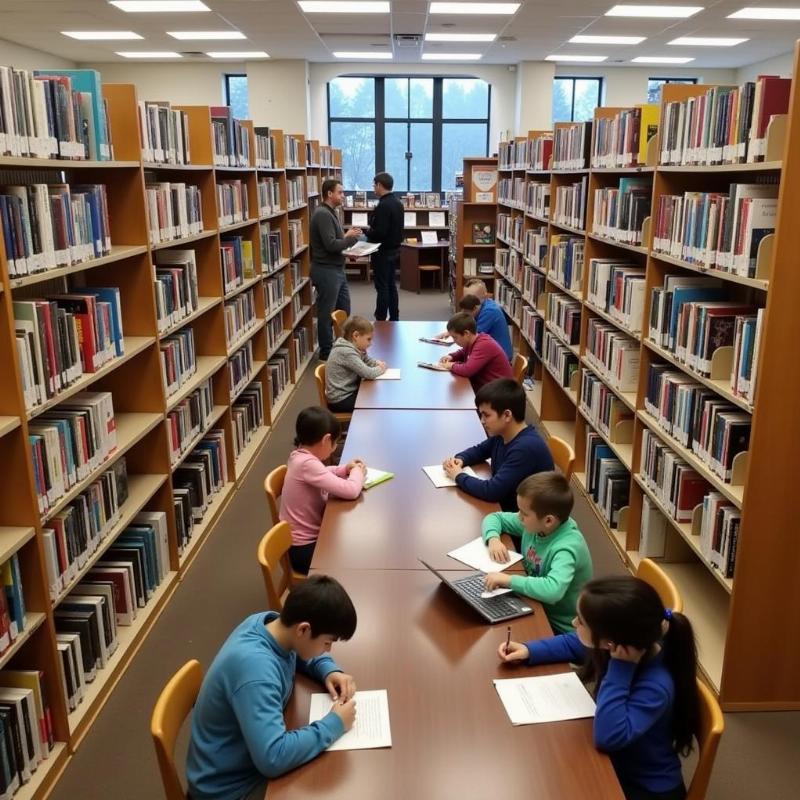Public places are essential parts of our lives, offering spaces for social interaction, recreation, and commerce. Understanding the public place definition is crucial not only for urban planning and governance but also for individuals to navigate their rights and responsibilities within these shared environments. A public place is generally defined as a location accessible to all members of the public, regardless of their background, socioeconomic status, or purpose. These spaces are typically owned or managed by government entities and are intended for communal use.
What Constitutes a Public Place?
Public places encompass a wide range of locations, each serving different functions within a community. Examples include parks, streets, sidewalks, libraries, government buildings, and public transportation. These spaces are vital for fostering a sense of community, enabling public discourse, and providing access to essential services.
Key Characteristics of Public Places
- Accessibility: Open to everyone without discrimination.
- Ownership/Management: Typically owned or managed by government entities.
- Communal Use: Intended for shared use by the public.
- Regulation: Subject to specific rules and regulations to maintain order and safety.
Why is the Public Place Definition Important?
Understanding the public place definition has several significant implications:
- Legal Rights and Responsibilities: Knowing what constitutes a public place helps individuals understand their rights and limitations within these spaces. For instance, freedom of speech is often protected in public areas, but certain behaviors, like littering or public intoxication, are restricted.
- Urban Planning and Development: The definition guides urban planners in designing and managing spaces that cater to the diverse needs of a community. This includes considerations like accessibility, safety, and aesthetic appeal.
- Social Interaction and Community Building: Public places provide crucial platforms for social interaction, fostering a sense of belonging and community spirit.
 Students Studying in a Public Library
Students Studying in a Public Library
Public vs. Private Spaces: Understanding the Difference
The distinction between public and private spaces is crucial. While public places are open to all, private spaces are restricted to authorized individuals. This distinction is essential for maintaining individual privacy and property rights. For example, while a shopping mall might feel like a public space, it is privately owned and subject to different rules than a public park.
Navigating Public Places Responsibly
When using public spaces, it’s important to be mindful of others and adhere to established rules and regulations. This includes respecting the space, keeping it clean, and behaving in a way that doesn’t infringe on the rights of others. Responsible use of public places ensures these valuable resources remain accessible and enjoyable for everyone.
Public Place Definition in Different Contexts
The precise definition of a “public place” can vary slightly depending on the specific legal or regulatory context. For instance, certain areas within private properties, such as shopping malls or restaurants, might be considered “quasi-public” spaces subject to some public regulations. Understanding these nuances is essential for navigating the complexities of shared spaces.
Conclusion
The public place definition is more than just a legal concept; it represents the essence of shared spaces within our communities. From parks and libraries to streets and public transport, these areas are vital for social interaction, recreation, and access to essential services. By understanding the definition and navigating these spaces responsibly, we contribute to a vibrant and inclusive community for all.
FAQ
- What is the basic public place definition? A public place is a location accessible to all members of the public, typically owned or managed by a government entity.
- Are shopping malls public places? While they might feel public, shopping malls are typically privately owned and subject to different rules than truly public spaces.
- Why are public places important for a community? They provide spaces for social interaction, recreation, and access to essential services, fostering a sense of community.
- What are some examples of public places? Parks, streets, sidewalks, libraries, government buildings, and public transportation.
- What are my responsibilities in a public place? Respect the space, keep it clean, and behave in a way that doesn’t infringe on the rights of others.
- Can the definition of “public place” change? Yes, the precise definition can vary depending on the specific legal or regulatory context.
- Where can I find more information about the regulations for public places in my area? You can typically find this information on your local government’s website or by contacting relevant authorities.
hot sex in public place
PlaTovi, a leading travel company based in India, specializes in crafting unforgettable travel experiences, from traditional package tours to bespoke itineraries. Whether you’re looking to explore the vibrant culture of India or venture further afield, PlaTovi offers a comprehensive range of services, including hotel and resort bookings, international and domestic flight bookings, event and wedding planning, car rentals, and visa assistance. We pride ourselves on providing exceptional service and local insights to ensure your journey is seamless and enriching. Contact us today to start planning your dream adventure! Email: [email protected], Phone: +91 22-2517-3581.